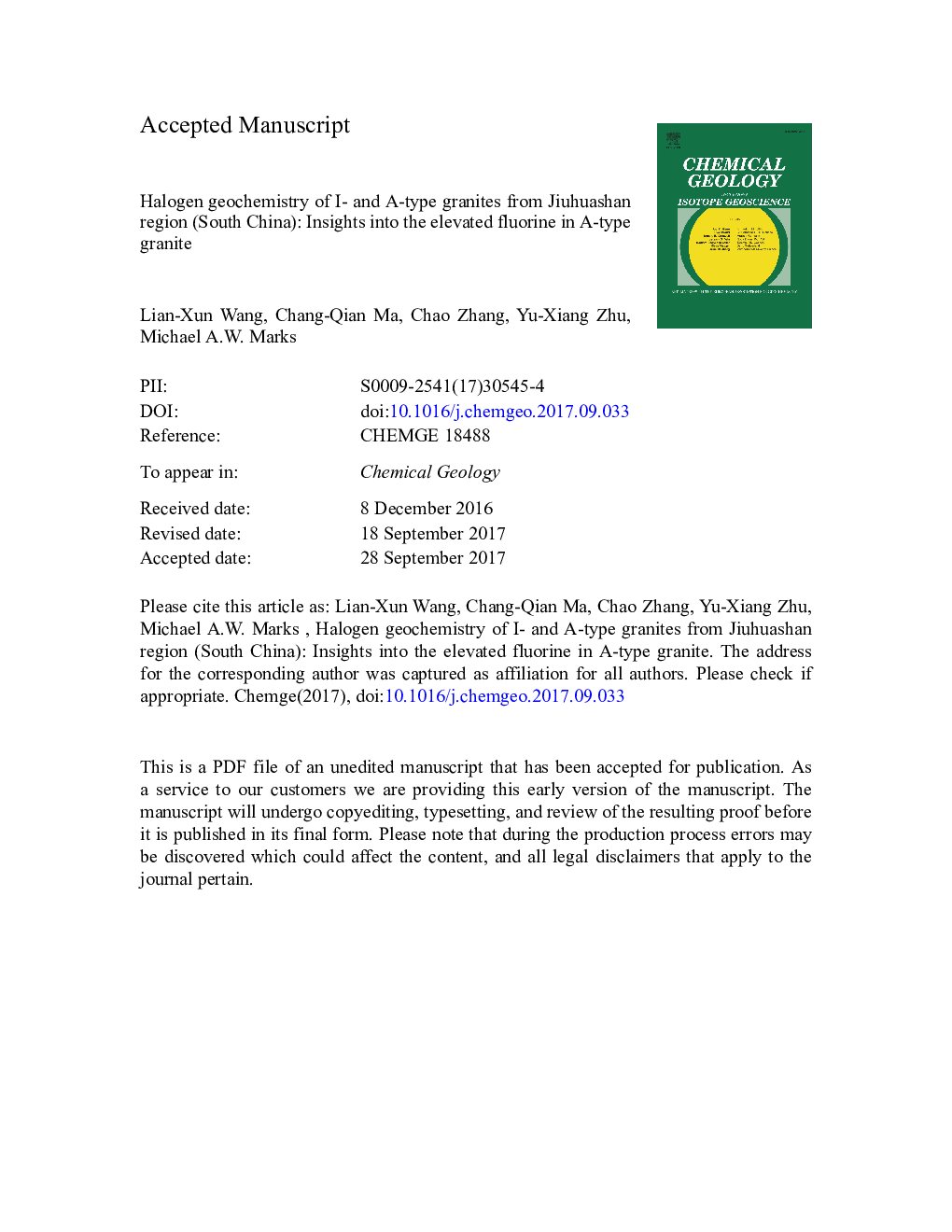| Article ID | Journal | Published Year | Pages | File Type |
|---|---|---|---|---|
| 8910416 | Chemical Geology | 2018 | 55 Pages |
Abstract
Relative to I-type granites, the A-type rocks are F-rich (mean of 1230Â ppm vs. 540Â ppm) but poor in Cl (mean of 25Â ppm vs. 50Â ppm) and Br (mean of 130Â ppb vs. 200Â ppb), with indistinguishable I contents (from <Â 1 to 30Â ppb). Apatite and biotite from the two rock series show very similar relationships in terms of their F and Cl contents. A potential role of F for the genesis of A-type rocks is indicated by positive correlations with whole-rock HFSE and HREE contents and many other trace elements (e.g., Ga, Tl, Rb, Be). Calculated F and Cl abundances for primary melts are much higher than the respective whole-rock F and Cl contents, supporting late-stage volatile release during magma evolution. We suggest that the elevated F contents in A-type granites may initially originate from a F-rich melt and further elevated during prolonged magma differentiation.
Related Topics
Physical Sciences and Engineering
Earth and Planetary Sciences
Geochemistry and Petrology
Authors
Lian-Xun Wang, Chang-Qian Ma, Chao Zhang, Yu-Xiang Zhu, Michael A.W. Marks,
